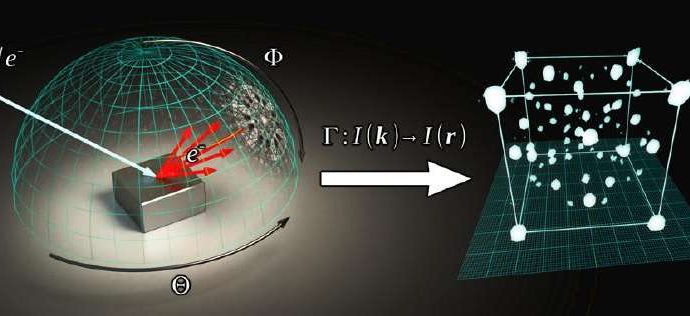Scientists have an idea of what’s inside of an atom, and gives a descriptive picture with 3D imagery.
Researchers have developed the first imaging technique that can clearly see inside molecular structures, and have used it to create 3D holograms of the atomic arrangements inside these structures. Before now, reliable imaging techniques (for example, scanning tunneling microscopy) could only scan the surfaces of molecules. The ability to peer deep inside a molecular structure and see all of the individual atoms will be essential for developing new materials and understanding their unique physical and chemical properties.
The researchers, Tobias Lühr et al., have published a paper on the new imaging technique in a recent issue of Nano Letters.
Until now, there has been no direct method that can see the insides of small molecules—the exact arrangement of the atoms in most molecules could only be investigated indirectly or predicted theoretically. This lack of experimental information has posed a problem, because in order to understand the relationship between a molecule’s structure and its properties, scientists need to know the precise atomic arrangement.
Previously, researchers have attempted to image molecular structures using holographic techniques, but these images suffered from severe artifacts, and even the best images could access no more than 10 atoms.
The new holographic imaging method significantly improves upon the previous methods: It almost completely eliminates image artifacts, has the ability to image thousands of atoms, and can also distinguish between different types of atoms. The researchers demonstrated the technique by creating 3D holograms of pyrite (FeS2).
The holography method works by scattering electron waves off a molecule’s atoms. Interference between the emitted and scattered electron waves creates diffraction patterns. This information is then used to reconstruct 3D holographic images showing the atoms’ true locations.
One of the keys to achieving the improved performance was to use electron waves at much higher energies than before (several thousand electron volts compared to a few hundred). The higher-energy electron waves can be constrained within a cone-shaped region instead of spreading out like the lower-energy electron waves, which reduces scattering and suppresses unwanted artifacts.
Although a single diffraction pattern made by high-energy electron waves can provide a reliable image, the researchers further improved the image quality by averaging and superimposing about 20 reconstructed images, which suppresses background noise.
The researchers predict that, by clearly showing the positions of atoms beneath the surface, the new method will complement surface imaging techniques and prove useful for future reseach.
Source: Phys.org

































Leave a Comment
You must be logged in to post a comment.